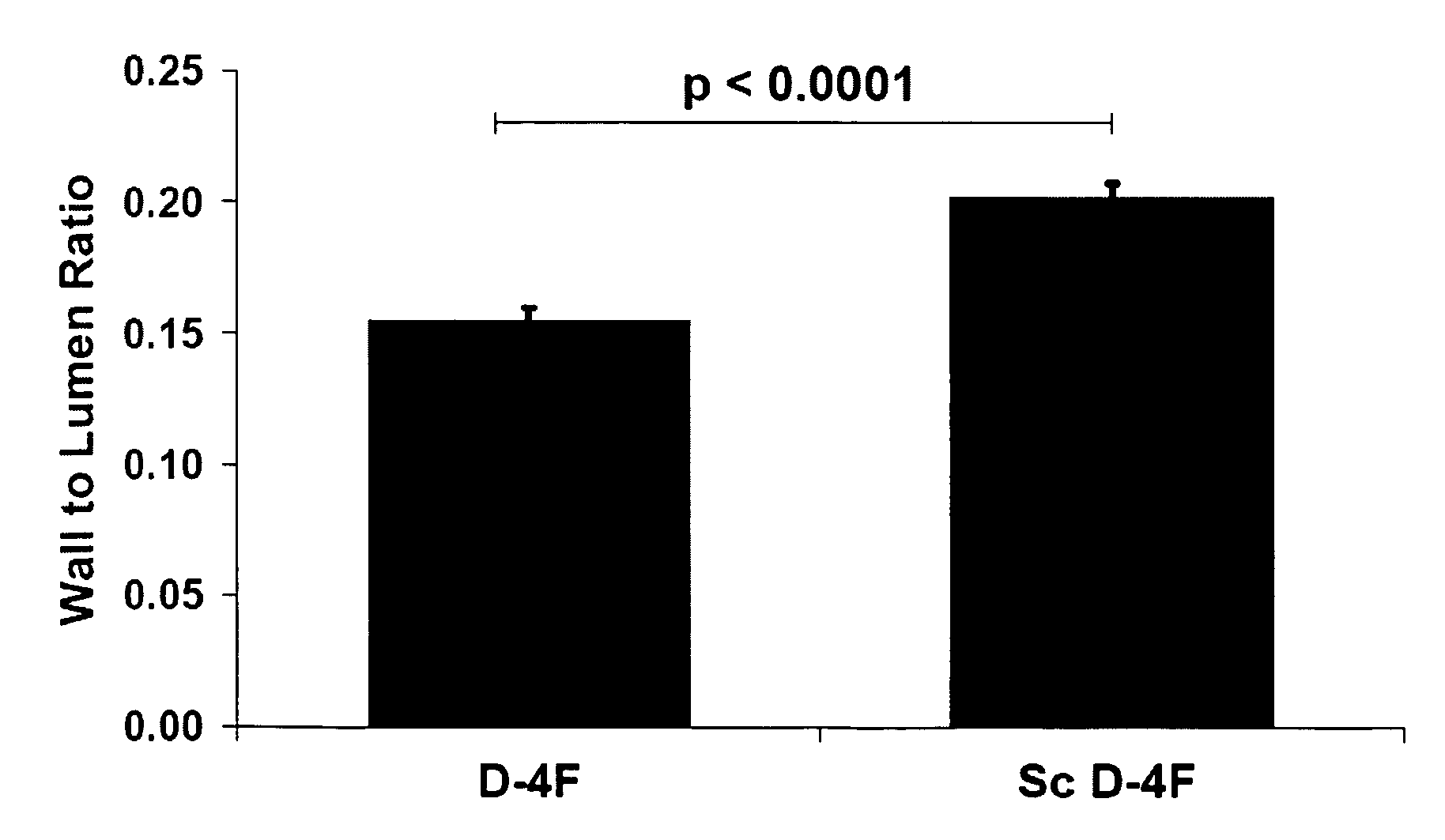Methods for improving the structure and function of arterioles
a technology of arterioles and arterioles, applied in the field of vascular medicine, can solve the problems of loss of normal vasoreactivity, fall in blood flow to the target organ, infarct in the arterioles involved, etc., and achieve the effect of improving the structure and function of arterioles and preserving the function of end organs
- Summary
- Abstract
- Description
- Claims
- Application Information
AI Technical Summary
Benefits of technology
Problems solved by technology
Method used
Image
Examples
example 1
[0221]As shown in FIGS. 1A, 1B, and 1C, mice with an absence of LDL receptors (LDLR− / −) have thickened brain arterioles compared to wild-type mice (WT). On a low fat chow diet the LDL receptor null mice have twice the level of plasma LDL of wild-type mice. However, they have very little atherosclerosis on a chow diet but as shown in the figure below even though they have minimal atherosclerosis, their brain arterioles are significantly thickened. Also as shown in the following figures when placed on a high-fat, high-cholesterol (Western) diet, these mice develop additional thickening of their brain arterioles. On the Western diet, these mice also develop extensive atherosclerosis.
[0222]It was recently reported that LDLR− / − mice have impaired spatial memory associated with a decreased synaptic density in the hippocampus (Mulder et al. (2004) Neurobiology of Disease 16: 212-219, see, e.g., FIG. 2 therein).
[0223]As shown in FIG. 2, treatment of LDLR − / − mice on a Western diet for six w...
example 2
ApoA-I Mimetic Peptide D-4F Reduces Brain Arteriolar Wall Thickening and Improves Spatial Memory in LDL Receptor Null Mice Fed a Western Diet
Summary
[0231]The wall thickness of brain arterioles 10-100 μm in diameter was determined in wild-type and LDL-receptor null C57BL / 6 mice on chow or a Western diet administered alone or with D-4F or scrambled D-4F. Spatial memory was determined by use of the T-maze continuous alternation task. On chow, brain arteriolar wall thickness in LDL receptor null mice was increased compared to wild-type and further increased on the Western diet (p<0.001). The increased brain arteriolar wall thickness was in part due to an increase in smooth muscle α-actin content and was decreased by treatment with D-4F but not scrambled D-4F. Adding the Western diet significantly impaired performance in the T-maze (p<0.05) and was improved with D-4F compared to scrambled D-4F (p<0.05). The changes in performance and in arteriolar wall thickness were independent of plasm...
PUM
| Property | Measurement | Unit |
|---|---|---|
| diameter | aaaaa | aaaaa |
| diameter | aaaaa | aaaaa |
| diameter | aaaaa | aaaaa |
Abstract
Description
Claims
Application Information
 Login to View More
Login to View More - R&D
- Intellectual Property
- Life Sciences
- Materials
- Tech Scout
- Unparalleled Data Quality
- Higher Quality Content
- 60% Fewer Hallucinations
Browse by: Latest US Patents, China's latest patents, Technical Efficacy Thesaurus, Application Domain, Technology Topic, Popular Technical Reports.
© 2025 PatSnap. All rights reserved.Legal|Privacy policy|Modern Slavery Act Transparency Statement|Sitemap|About US| Contact US: help@patsnap.com



